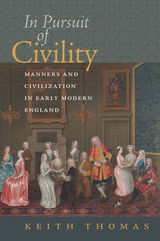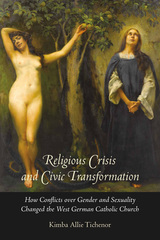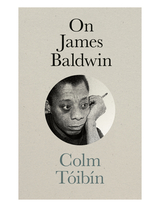300 scholarly books by Brandeis University Press and 8
have author last names that start with T
300 scholarly books by Brandeis University Press and 8
300 scholarly books by Brandeis University Press
8 have author last names that start with T have author last names that start with T
8 have author last names that start with T have author last names that start with T

CASE 4.2A Tufts Medicine Health Care System
Merging Hospitals in a New Model (A)
Maher Tabba
Brandeis University Press, 2024
This case builds on the Tufts Medicine Health Care System (A) case by exploring the barriers and challenges Tufts Medicine faced aligning operations and stakeholders. It discusses the challenges the leaders experienced bringing together an academic medical center with a community hospital system while meeting its goals of maintaining its competitive position while providing high quality care. A discussion of this case will enable instructors to explore the challenges and opportunities of health care mergers in depth.
[more]

CASE 4.2B Tufts Medicine Health Care System
Merging Hospitals in a New Model (B)
Maher Tabba
Brandeis University Press, 2024
This case builds on the Tufts Medicine Health Care System (A) case by exploring the barriers and challenges Tufts Medicine faced aligning operations and stakeholders. It discusses the challenges the leaders experienced bringing together an academic medical center with a community hospital system while meeting its goals of maintaining its competitive position while providing high quality care. A discussion of this case will enable instructors to explore the challenges and opportunities of health care mergers in depth.
[more]

Ethics at Work
Creating Virtue at an American Corporation
Daniel Terris
Brandeis University Press, 2013
The defense industry has, to some people’s surprise, the broadest and most sustained set of ethics programs of any sector of American business today. Lockheed Martin, which specializes in a host of high-technology products and services for the federal government, has dramatically escalated its formal ethics and business conduct program since the mega-corporation was formed through a merger in 1995. The Ethics and Business Conduct Division employs 65 “ethics officers” in sites around the United States, and it requires the firm’s 130,000-plus employees to devote at least one hour per year to consideration of the ethical issues of the business, at a cost of millions of dollars per year. Daniel Terris spent two years researching Lockheed Martin materials and interviewing its ethics officers and ordinary employees to develop this rich case study of the ethics program at this powerful global corporation. This study begins with a survey of American attitudes toward ethics in business over the past century, raising the question of whether ethics can be genuinely built into the modern mega-corporation. Terris then develops a portrait of Lockheed Martin—its history and the nature of its far-flung businesses—turning at last to its ethics program, which was created following a series of bribery, overcharging, and corruption scandals in the 1970s and 1980s. By 1996, Lockheed Martin had in place some dull, preachy ethics programs designed to provide basic information on telling right from wrong in business practice. But then-CEO Norm Augustine wanted to liven things up, so he turned to an unlikely source of inspiration: the irreverent Dilbert comic strip. The company came up with a board game that resembled Clue, but used Dilbert characters to explore ethical case studies drawn from real-life Lockheed Martin incidents. Terris examines the success of the board game, as well as subsequent efforts including special workshops, a film festival, and biennial ethics surveys to engage employees in broad-based discussions of ethics at work. Although Terris applauds Lockheed Martin’s ethics program as “gloriously democratic” in its focus on the responsibility of every worker for the ethical dimensions of his or her actions, he is concerned that the broad-based focus tends to divert attention from the ethical responsibilities of senior management and the moral complexities of collective decision-making. While he admires the ambitious scope of the program, he notes that the corporation’s definition of “ethics” focuses on individual behavior rather than on the impact of the corporation’s broader policies on local, national, and global communities. The ultimate effect of such programs may be to create more ethical business practices—but, ironically, at the expense of the public good.
[more]

After the Fire
The Destruction of the Lancaster County Amish
Randy-Michael Testa
Brandeis University Press, 1992
Lancaster County, Pennsylvania is best known for its abundantly productive farmland and for the Amish and other “Plain People” who have made their home there since colonial times. Now both of these unique features are in danger of being permanently destroyed. “The Garden Spot of America” loses more than 20 acres of farmland every day to accelerated development. And the Amish, with a population that has doubled in the past 20 years and little land left to farm, tired of living in a fish-bowl for five million tourists a year, and frustrated by changing regulations, are moving out. They are going to Kentucky, Tennessee, Indiana -- anywhere to get away from “Amish Country.” Randy Testa initially traveled to Lancaster County in the summer of 1988 to research his dissertation, never intending to become involved personally in county affairs. But living with an Amish family that summer he saw firsthand the trials they faced: constant streams of gawking tourists, the daily paving-over of rich farmland, and the greed and complicity of local officials. Realizing that the quiet, nonresistant Amish would not fight against these destructive influences, Testa felt called to speak out on their behalf. Thus began the continuing moral journey that is at the heart of After the Fire. It is a story of family and farming, community and faith, morality as practiced by the Amish in daily life. And, ultimately, it is about our own world, for as Testa writes, we must look to the Amish to “point out how far we have strayed.” The book is illustrated with 20 charcoal drawings by Amish artist Susie Riehl. The drawings are as understated as the Amish themselves, simple yet striking sketches from within a threatened world. In this final decade of the twentieth century, a life-and-death struggle is being played out in Lancaster County: between land speculation and land stewardship, between material wealth and moral worth, between unrestrained growth and “the ties that bind.” The Amish are at the center of the conflict, trying to maintain their unique community in the face of increasing encroachment from the outside. Randy Testa stands as a witness to their struggle, telling “the story of a people on the verge of conflagration.”
[more]

In Pursuit of Civility
Manners and Civilization in Early Modern England
Keith Thomas
Brandeis University Press, 2018
Keith Thomas’s earlier studies in the ethnography of early modern England, Religion and the Decline of Magic, Man and the Natural World, and The Ends of Life, were all attempts to explore beliefs, values, and social practices in the centuries from 1500 to 1800. In Pursuit of Civility continues this quest by examining what English people thought it meant to be “civilized” and how that condition differed from being “barbarous” or “savage.” Thomas shows that the upper ranks of society sought to distinguish themselves from their social inferiors by distinctive ways of moving, speaking, and comporting themselves, and that the common people developed their own form of civility. The belief of the English in their superior civility shaped their relations with the Welsh, the Scots, and the Irish, and was fundamental to their dealings with the native peoples of North America, India, and Australia. Yet not everyone shared this belief in the superiority of Western civilization; the book sheds light on the origins of both anticolonialism and cultural relativism. Thomas has written an accessible history based on wide reading, abounding in fresh insights, and illustrated by many striking quotations and anecdotes from contemporary sources.
[more]

Religious Crisis and Civic Transformation
How Conflicts over Gender and Sexuality Changed the West German Catholic Church
Kimba Allie Tichenor
Brandeis University Press, 2016
This book offers a fresh interpretation of the connection between the West German Catholic Church and post-1950s political debates on women’s reproductive rights and the protection of life in West Germany. According to Tichenor, Catholic women in West Germany, influenced by the culture of consumption, the sexual revolution, Vatican II reforms, and feminism, sought to renegotiate their relationship with the Church. They demanded a more active role in Church ministries and challenged the Church’s hierarchical and gendered view of marriage and condemnation of artificial contraception. When the Church refused to compromise, women left en masse. In response, the Church slowly stitched together a new identity for a postsecular age, employing an elaborate nuptial symbolism to justify its stance on celibacy, women’s ordination, artificial contraception, abortion, and reproductive technologies. Additionally, the Church returned to a radical interventionist agenda that embraced issue-specific alliances with political parties other than the Christian parties. In her conclusion, Tichenor notes more recent setbacks to the German Catholic Church, including disappointment with the reactionary German Pope Benedict XVI and his failure in 2010 to address over 250 allegations of sexual abuse at twenty-two of Germany’s twenty-seven dioceses. How the Church will renew itself in the twenty-first century remains unclear. This closely observed case study, which bridges religious, political, legal, and women’s history, will interest scholars and students of twentieth-century European religious history, modern Germany, and the intersection of Catholic Church practice and women’s issues.
[more]

On James Baldwin
Colm Toibin
Brandeis University Press, 2024
Colm Tóibín’s personal account of encountering James Baldwin’s work, published in Baldwin’s centenary year.
Acclaimed Irish novelist Colm Tóibín first read James Baldwin just after turning eighteen. He had completed his first year at an Irish university and was struggling to free himself from a religious upbringing. He had even considered entering a seminary and was searching for literature that would offer illumination and insight. Inspired by the novel Go Tell It on the Mountain, Tóibín found a writer who would be a lifelong companion and exemplar.
Tóibín appreciates Baldwin, writer to writer:
Baldwin was interested in the hidden and dramatic areas in his own being, and was prepared as a writer to explore difficult truths about his own private life. In his fiction, he had to battle for the right of his protagonists to choose or influence their destinies. He knew about guilt and rage and bitter privacies in a way that few of his White novelist contemporaries did. And this was not simply because he was Black and homosexual; the difference arose from the very nature of his talent, from the texture of his sensibility. “All art,” he wrote, “is a kind of confession, more or less oblique. All artists, if they are to survive, are forced, at last, to tell the whole story, to vomit the anguish up.”
On James Baldwin is a magnificent contemporary author’s tribute to one of his most consequential literary progenitors.
Acclaimed Irish novelist Colm Tóibín first read James Baldwin just after turning eighteen. He had completed his first year at an Irish university and was struggling to free himself from a religious upbringing. He had even considered entering a seminary and was searching for literature that would offer illumination and insight. Inspired by the novel Go Tell It on the Mountain, Tóibín found a writer who would be a lifelong companion and exemplar.
Tóibín appreciates Baldwin, writer to writer:
Baldwin was interested in the hidden and dramatic areas in his own being, and was prepared as a writer to explore difficult truths about his own private life. In his fiction, he had to battle for the right of his protagonists to choose or influence their destinies. He knew about guilt and rage and bitter privacies in a way that few of his White novelist contemporaries did. And this was not simply because he was Black and homosexual; the difference arose from the very nature of his talent, from the texture of his sensibility. “All art,” he wrote, “is a kind of confession, more or less oblique. All artists, if they are to survive, are forced, at last, to tell the whole story, to vomit the anguish up.”
On James Baldwin is a magnificent contemporary author’s tribute to one of his most consequential literary progenitors.
[more]

Architecture in Salem
An Illustrated Guide
Bryant F. Tolles, Jr.
Brandeis University Press, 2023
The definitive guide to Salem’s architecture, now available in a new edition.
Salem, Massachusetts is home to one of the largest extant collections of historical architecture in the entire nation. In this long-awaited new edition, noted architectural historian Bryant F. Tolles, Jr., presents an illustrated guide and walking tour covering more than three centuries of building styles and types. The book discusses over 350 buildings and complexes, with individual entries and photographs of nearly 230 structures. The material has been arranged according to eight tour districts, each accompanied by an introduction and a map.
A joy for the avid walker and arm-chair enthusiast alike, this book is an essential guide to the architecture of Salem from the early seventeenth century through the Georgian, Federal, Victorian, modern, and contemporary periods. Updated with new maps; color illustrations; a preface by Lynda Roscoe Hartigen, executive director and CEO of the Peabody Essex Museum; and a foreword by Steven Mallory, manager of historic structures and landscapes at the Peabody Essex Museum.
Salem, Massachusetts is home to one of the largest extant collections of historical architecture in the entire nation. In this long-awaited new edition, noted architectural historian Bryant F. Tolles, Jr., presents an illustrated guide and walking tour covering more than three centuries of building styles and types. The book discusses over 350 buildings and complexes, with individual entries and photographs of nearly 230 structures. The material has been arranged according to eight tour districts, each accompanied by an introduction and a map.
A joy for the avid walker and arm-chair enthusiast alike, this book is an essential guide to the architecture of Salem from the early seventeenth century through the Georgian, Federal, Victorian, modern, and contemporary periods. Updated with new maps; color illustrations; a preface by Lynda Roscoe Hartigen, executive director and CEO of the Peabody Essex Museum; and a foreword by Steven Mallory, manager of historic structures and landscapes at the Peabody Essex Museum.
[more]
READERS
Browse our collection.
PUBLISHERS
See BiblioVault's publisher services.
STUDENT SERVICES
Files for college accessibility offices.
UChicago Accessibility Resources
home | accessibility | search | about | contact us
BiblioVault ® 2001 - 2024
The University of Chicago Press









